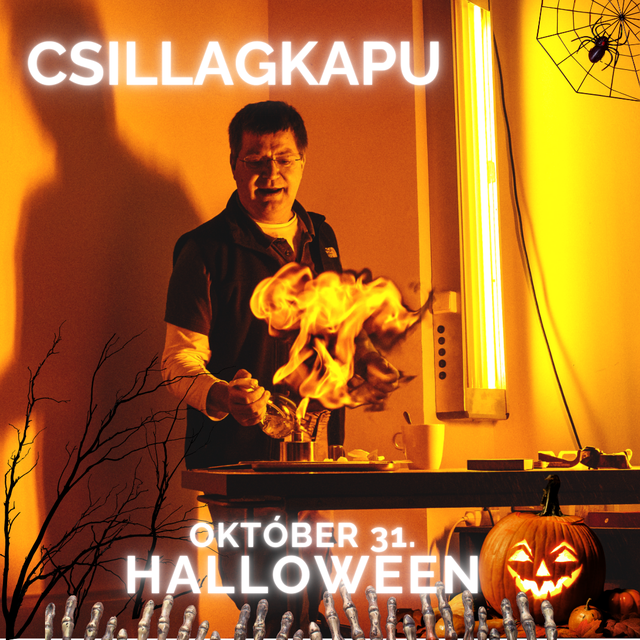
Stargate: Halloween - 10.31.
Are we alone in the universe? Could there be life beyond Earth? For the first time in human history, modern astronomy and space exploration tools have brought us closer to the answer than ever before! At this Stargate, extraterrestrials take center stage! Our astrobiology program will reveal whether conditions suitable for life exist on Mars or Europa, and what exoplanets could be the seeds of life.
Our UFO roundtable discussion will reveal what we can consider to be unidentified flying objects in the sky.
In our meteorite examination, we will look at meteorites that contain the oldest organic materials in the solar system. We will also present images taken at the observatory of the famous Antarctic meteorite that may contain traces of Martian life.
In addition to the most beautiful star clusters and galaxies in the autumn sky, we will also observe the giant planets Saturn, Uranus, and Neptune through a telescope. The E.T. cluster will also be visible to us in the evening. Those who stay until the end of the program will be able to admire the conjunction of the waning Moon and the star Elnath.

Schedule
Star Gate: During our major astronomy event, you can visit the Svábhegy Observatory program venues freely and at your own pace. It is worth buying tickets online in advance, but tickets are also available on site.
Programs:
Astrobiology lecture - let's look for signs of life!
UFO roundtable discussion - unidentified flying objects on the horizon.
Interactive astronomy programs
Meteorite examination - hold stones from space in your hands!
Spectrum Zone - light experiments in all colors of the rainbow
Planetary Sniffing Laboratory - get ready for some serious sniffing!
Comet Cooking - we cook smoking comet nuclei
Space-Time Trampoline - put the planets into orbit around the Sun!
Telescope Tricks - we take it apart, cut it in half, look inside, and focus it.
Nighttime telescope observation
Saturn: we can admire this planet, which rises higher and higher during the evening, from all of our observation sites!
Uranus: the northern pole of this unique, yellow-green planet with a tilted axis faces us in the telescope.
Neptune: our outermost sea-blue planetary neighbor waves at us from the edge of the solar system.
The waning Moon, rising after 10 p.m., is aligned with the star Elnath in the constellation Taurus. On the Moon, we can admire the famous trio of craters at the edge of the Nectaris basin: Theophylus, Cyrillus, and Catharina.
The most beautiful deep-sky objects of autumn also await us:
Glittering globular clusters and open clusters: M2 and M15 globular clusters, the Twin Cluster, the Spiral Cluster, the Shoulder Cluster, the rising Pleiades, and the unmissable E.T. Cluster tonight.
Cosmic smoke rings of planetary nebulae: Ring Nebula, Saturn Nebula, Blue Snowball Nebula.
For now, only with our telescopes, but we will also visit our galactic neighbor, the Andromeda Nebula!
In case of cloudy weather: Our Stargate event will be held regardless of the weather, as our interactive program venues are always accessible. In cloudy weather, instead of observing celestial bodies through telescopes, we will offer dome tours, video observations through telescopes, spectroscopic light source observations through telescopes, and themed lectures!
Svábhegyi Observatory of Budapest
"The Svábhegyi Observatory is the largest demonstrational observatory in Budapest also an interactive astronomy experience centre. Our main goal is to bring the beauty of the Universe closer to everyone."
